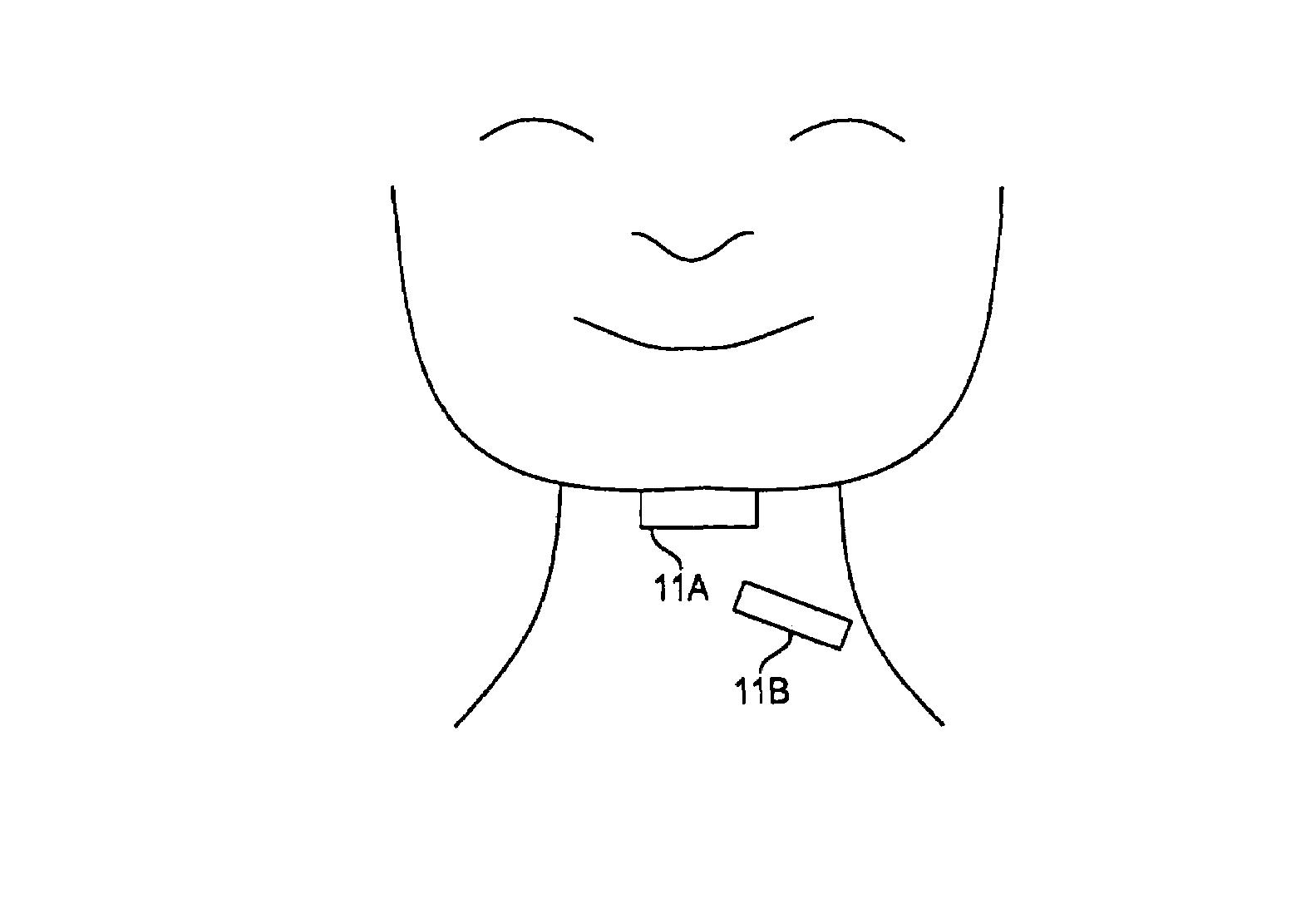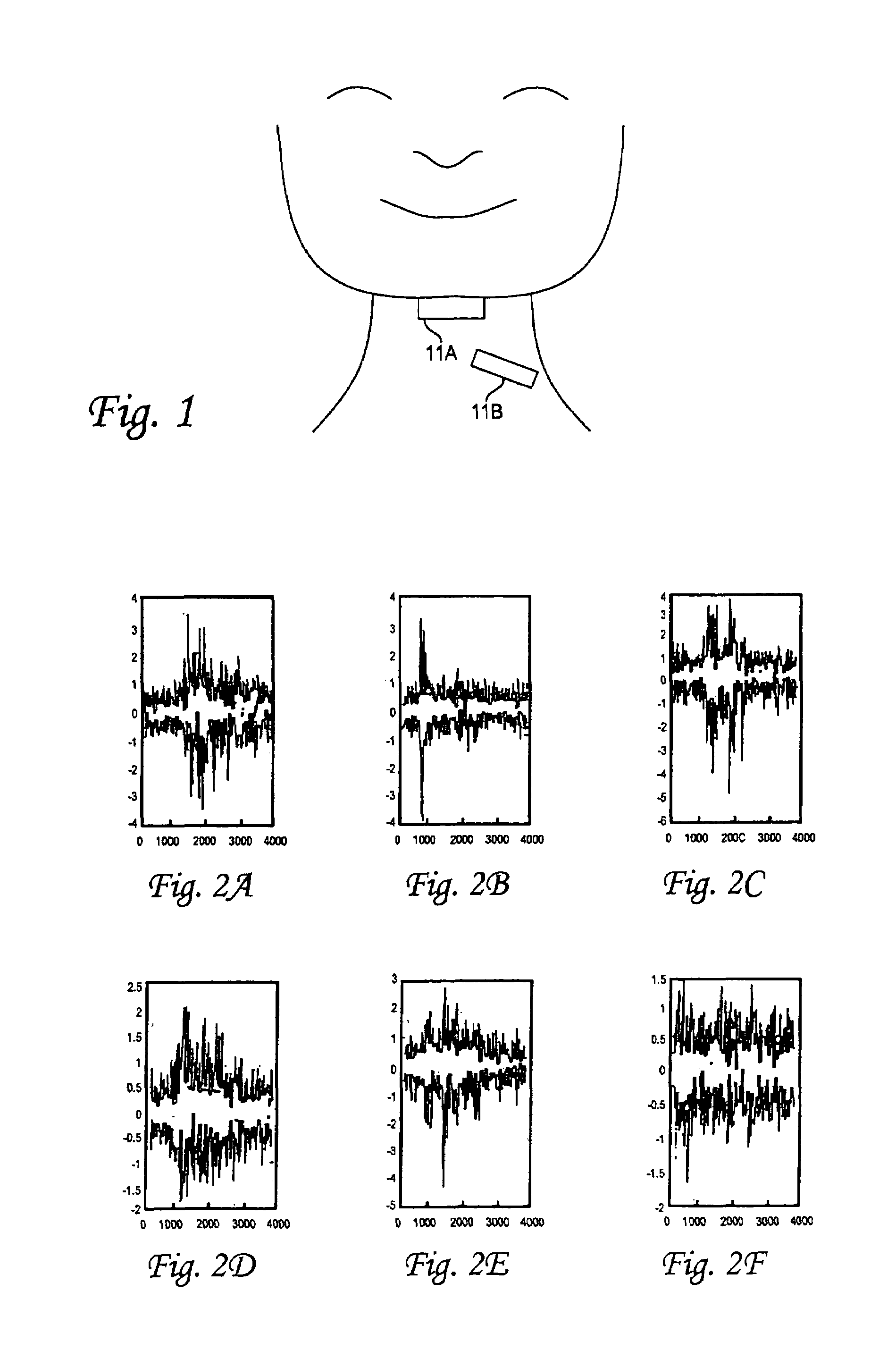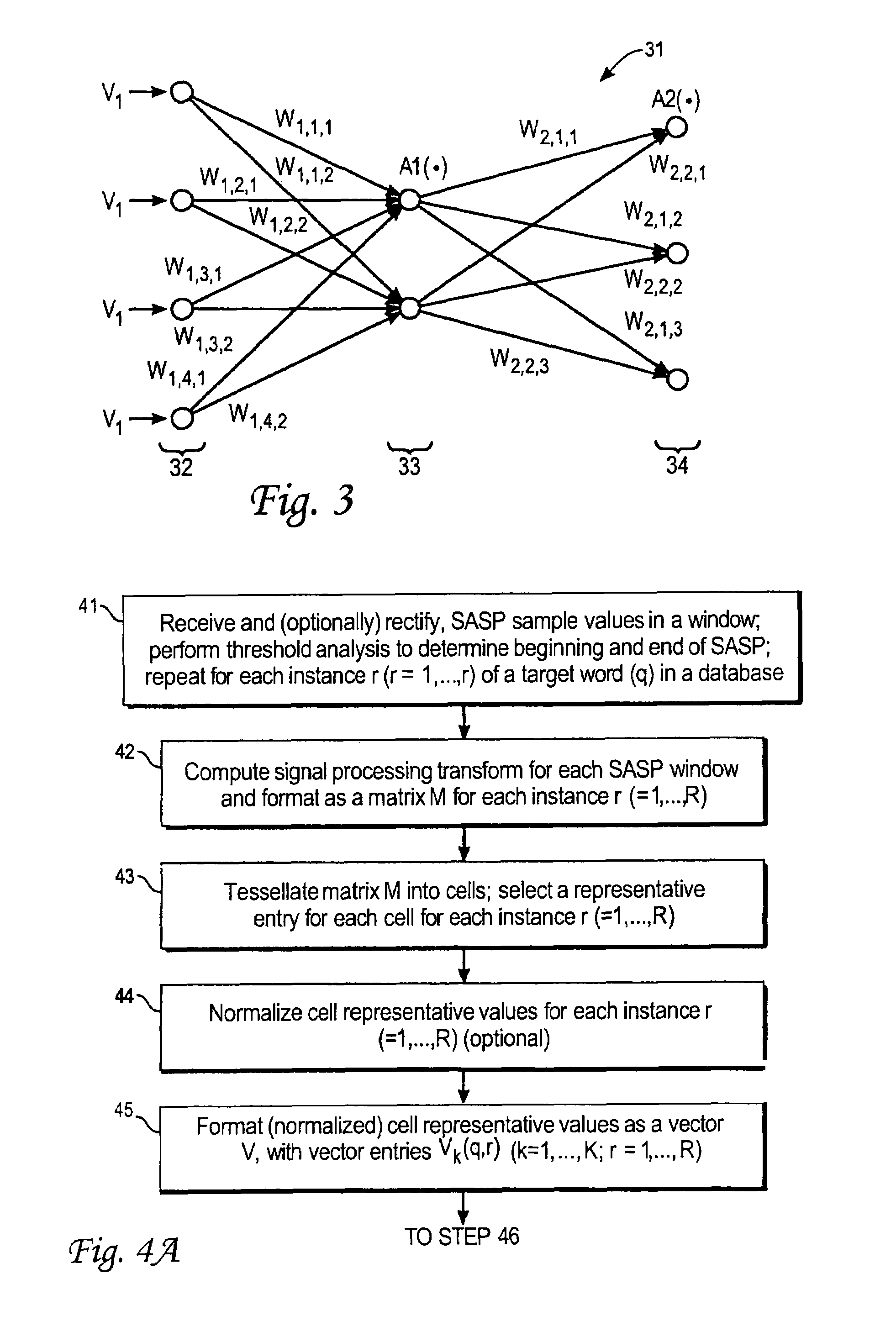Applications of sub-audible speech recognition based upon electromyographic signals
a technology of electromyographic signals and speech recognition, applied in the field of communication applications of electromyographic signals, can solve the problems of difficult communication, dangerous and challenging communication difficulties, and physical limitations of sound production and recognition, and achieve the effect of reducing the risk of speech loss, and improving the accuracy of speech recognition
- Summary
- Abstract
- Description
- Claims
- Application Information
AI Technical Summary
Benefits of technology
Problems solved by technology
Method used
Image
Examples
Embodiment Construction
[0021]In some initial tests, sub-audible pronunciation of six English words (“stop”, “go”, “left”, “right”, “alpha” and “omega”) and ten numerals (“1”, “2”, “3”, “4”, “5”, “6”, “7”, “8”, “9” and “0”) were recorded for each of three subjects, ages 55, 35 and 24, to provide a control set of words for a small graphic model that might be used to provide commands on a Mars Rover system, for example. The words “alpha” and “omega” may be used to enter a command to move faster or slower, or up or down, or forward or backward, as appropriate under the circumstances. EMG data were collected for each subject, using two pairs of self-adhesive Ag / Ag—Cl electrodes, located near the left and right anterior external area of the throat, about 0.25 cm back from the chin cleft and about 1.5 cm from the right and left sides of the larynx, as indicated in FIG. 1. Initial results indicate that one pair, or more pairs if desired, of electrodes, located diagonally between the cleft of the chin and the lary...
PUM
 Login to View More
Login to View More Abstract
Description
Claims
Application Information
 Login to View More
Login to View More - R&D
- Intellectual Property
- Life Sciences
- Materials
- Tech Scout
- Unparalleled Data Quality
- Higher Quality Content
- 60% Fewer Hallucinations
Browse by: Latest US Patents, China's latest patents, Technical Efficacy Thesaurus, Application Domain, Technology Topic, Popular Technical Reports.
© 2025 PatSnap. All rights reserved.Legal|Privacy policy|Modern Slavery Act Transparency Statement|Sitemap|About US| Contact US: help@patsnap.com



